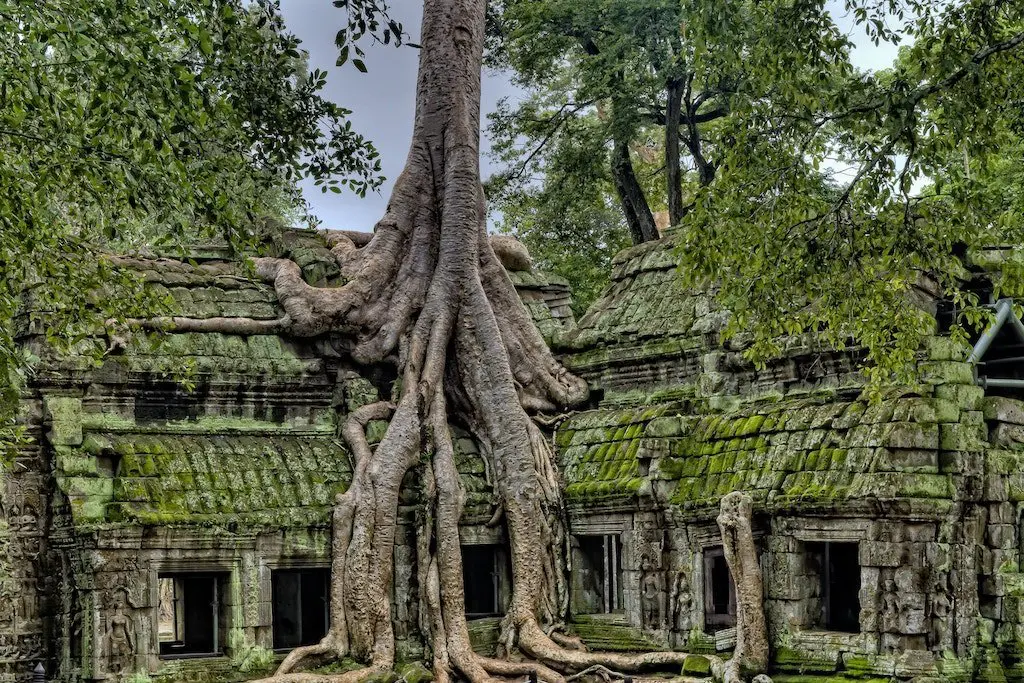A few weeks ago we blogged about 7 Experiences In Seam Reap That Aren’t Angkor. Today, we dedicate an entire blog post to the site itself and explain what the big Khmer deal is around Angkor.
What is Angkor?
Angkor is one of the ancient world’s best-preserved sites and is a place of extraordinary national pride among Cambodians. Technically, Angkor translates to “city.” However, today the term specifically references Angkor Archeological Park in Cambodia’s northeastern province of Siem Reap.
While the city’s moats and canals are of great interest, it’s actually the countless jungle temples that attract over two million shutter-happy visitors per year. Said temples were built by Cambodian Kings interested in leaving their respective marks on the world. In the typical fashion of one-upmanship, each temple was built larger, more elaborately, and even more symmetrically than the last. Ultimately, this tradition of besting the temple that came before culminated in the region’s greatest wonder of all, Angkor Wat.
Before being abandoned in the 15th century, Angkor became the physical incarnation of Mt Meru, aka the Hindu equivalent of Mt. Olympus. At its peak, it housed over 750,000 people and spanned over 400 square miles (1000 square kilometres).
Here are seven of our favourite temples and sites within the borders of Angkor.
7. Ta Som
Ta Som is physically and historically dwarfed compared to the park’s more famous structures. But despite its size, it has become recognizable for the sacred fig tree growing right out of its laterite walls. Although the tree is slowly destroying the temple, it adds otherworldly air and makes for fantastic camera fodder.
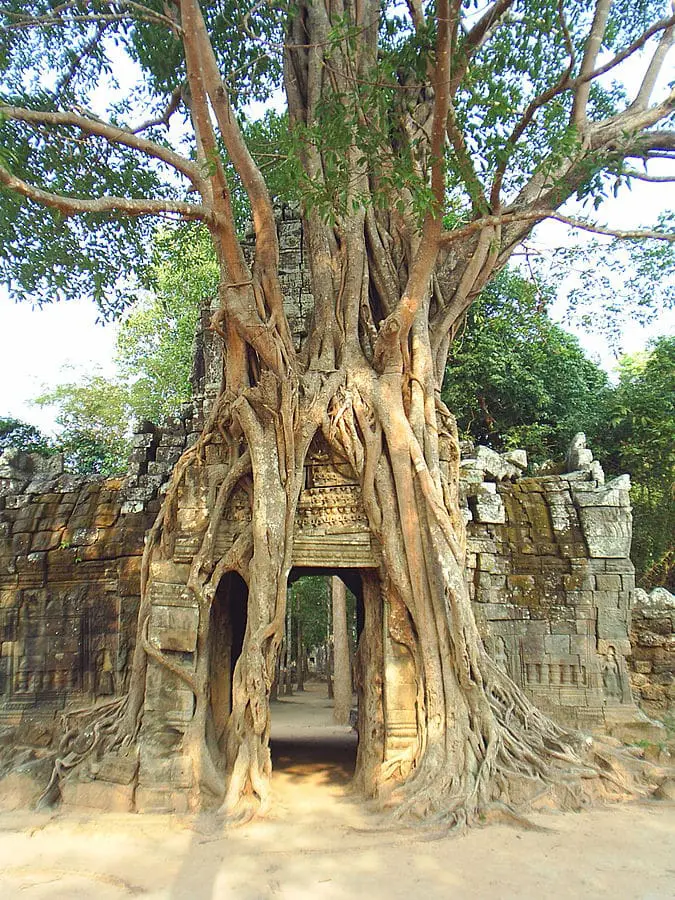
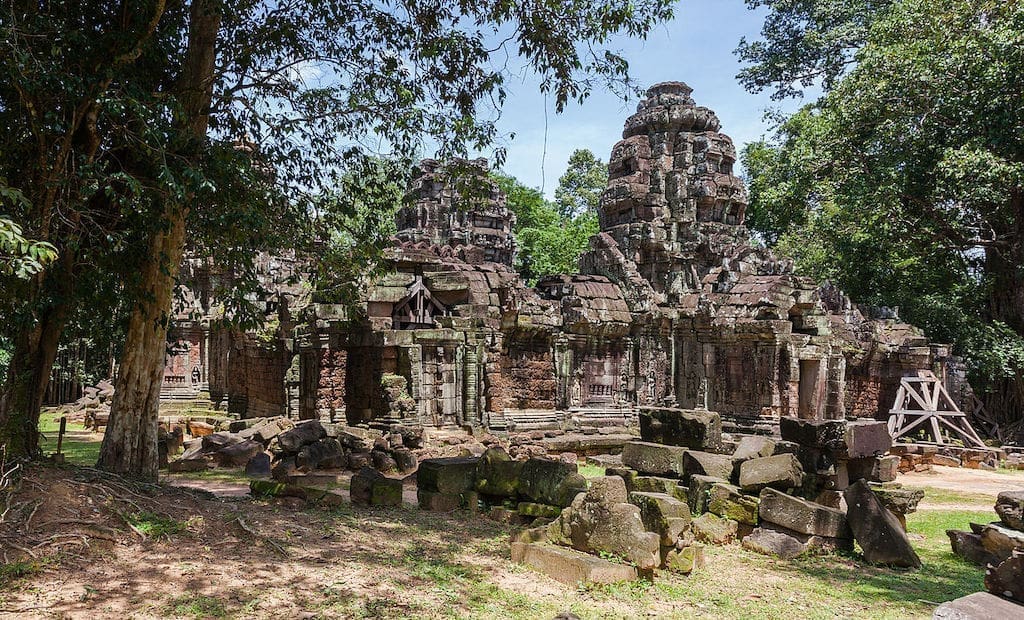
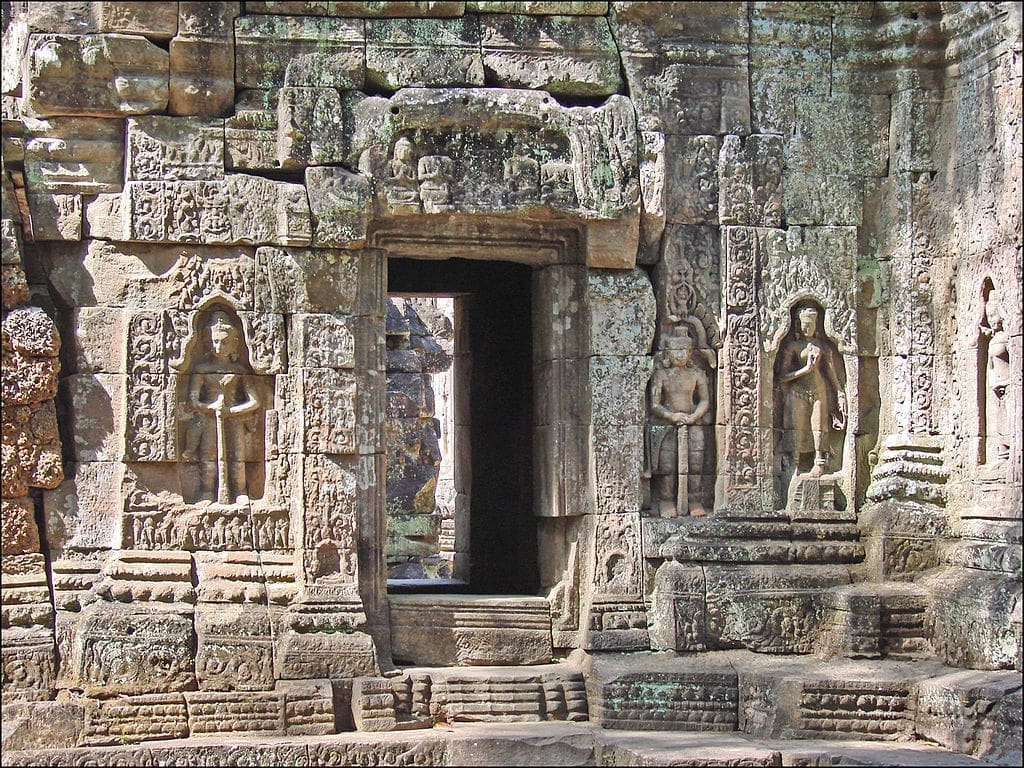
Unfortunately, Ta Som is not featured on any of our group tours through Angkor Archeological Park. Visit the site on a Tailor-Made Vacation with Out Adventures.
6. Beng Mealea
Channel your inner Indiana Jones at Beng Mealea, the complex’s most atmospheric ruin. The unrestored temple was built of sandstone and in the same style as Angkor Wat. However, unlike Angkor Wat, Beng Mealea has surrendered to the elements. Trees, brush, and moss has completely blanketed the collapsed ruins. Although it is not well preserved, there’s something exciting about witnessing the lush jungle swallowing up this fantastical temple.
Travel Tip: The temple was previously quite difficult to reach. Today, a single road passes nearby, and foot traffic to the site has become more common. Go early to explore the ruins in peace and live your Harrison Ford fantasy.


Unfortunately, Beng Mealea is not featured on any of our group tours through Angkor Archeological Park. Visit the site on a Tailor-Made Vacation with Out Adventures.
5. Kbal Spean
When you’re completely templed out, spend a morning hiking the region’s lush jungles en route to Kbal Spean, or more commonly, ‘River of a Thousand Lingas.’ The beautiful 2km hike concludes at a fork: one way takes you to a glorious waterfall, while the other route leads to a series of lingas carvings. Lingas being Khmer for, um, “phallic symbols.” Aside from a few notable losses, the carvings are extremely well-maintained and worth the sweaty jungle jaunt.
Travel Tip: Carry plenty of water as there isn’t any beyond the entrance. Also, if you’re arriving during the dry season, the waterfall may be nothing more than a trickle.
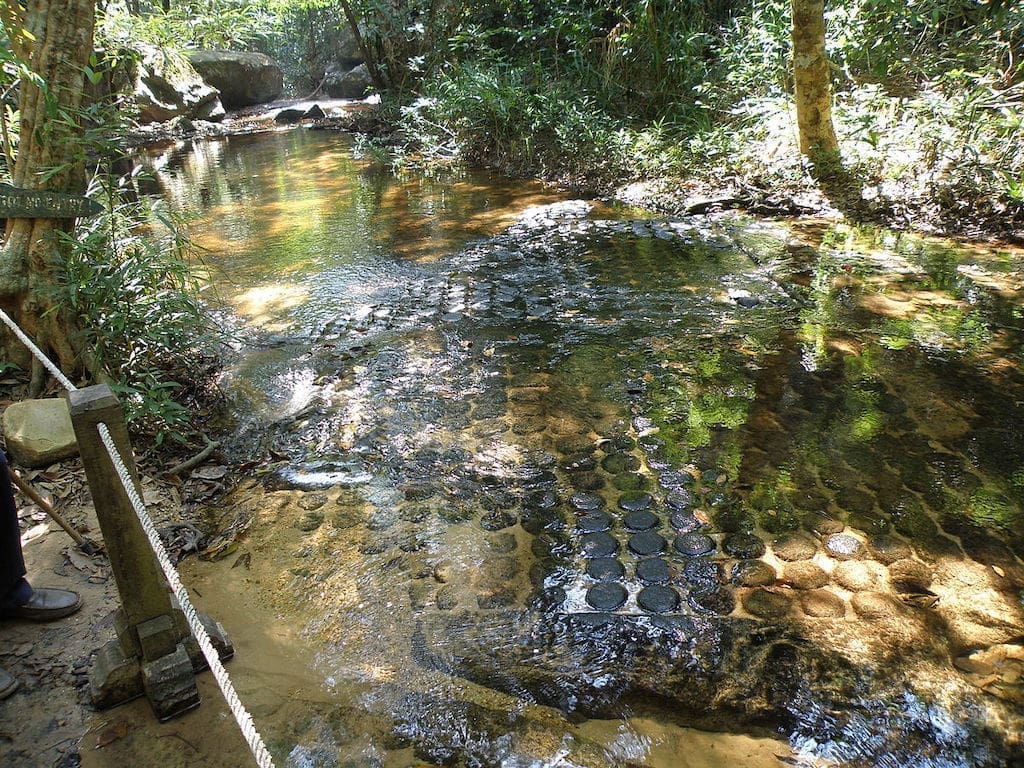

Unfortunately, Kbal Spean is not featured on any of our group tours through Angkor Archeological Park. Visit the site on a Tailor-Made Vacation with Out Adventures.
4. Angkor Thom & Bayon Temple
At the heart of Angkor Thom (translation “Large City”) amidst the Cambodian jungle sits Bayon Temple, aka the Face Temple. The immediate impact of 54 gothic towers decorated with 216 imposing faces staring down at you is the region’s most arresting site. The clone statues all depict emperor Avalokiteshvara in a stoic pose with just the hint of a smile. Aside from the statues, the temple also features 1.2km (0.75 mi) of bas-reliefs (stone carvings), incorporating more than 11,000 figures.
Travel Tip: The temple’s eastward orientation is best photographed in the morning while the sun rises and the faces are illuminated.



Photograph Bayon Temple on our Cambodia & Laos: Buddhist Sites & City Nights gay tour.
3. Banteay Srei
The Angkor art at Banteay Srei (The Citadel of the Women) is so delicate it is said to have been carved exclusively by women, which makes sense considering the entire complex is dedicated to the female deity, Shiva. The temple’s stone has a pinkish hue, while its grounds include lavish libraries, elaborate towers, and a beautiful lotus pond out back. When you put the components together, the entire site is as much a celebration of spirituality as it is of womanhood.
Travel Tip: For a mere $7 USD, you can enjoy a short boat ride on the lotus pond just behind the temple.
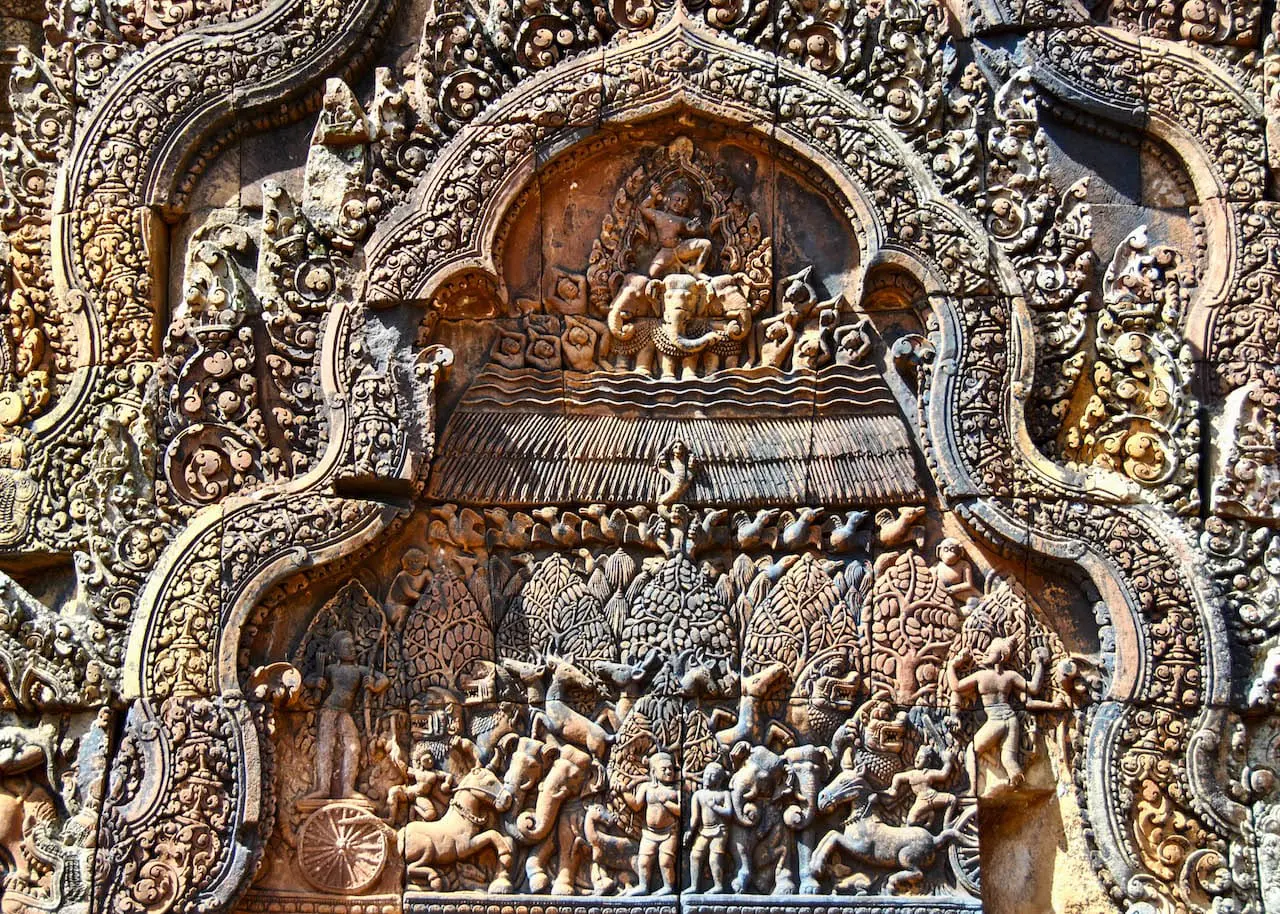
Pay your respects at Bantay Srei on our Cambodia & Laos: Buddhist Sites & City Nights gay tour.
2. Ta Prohm
Few sites are as iconic as Ta Prohm. The Lost Jungle Temple has spent the better part of the past century being swallowed up by the surrounding flora. Parasitic vines and strangling roots snake through the brickwork, slowly bringing the temple into decay. Meanwhile, moss and small shrubs cover the surface area. The clash of jungle and temple is so striking it was famously used as a major filming location for Angelina Jolie’s 2001 box-office smash Tomb Raider. Today, a dedicated team of Indian and Cambodian archeologists are looking to stabilize and restore the site.
Travel Tip: Like Bayon Temple, Ta Prohm faces east and is best photographed in the morning.


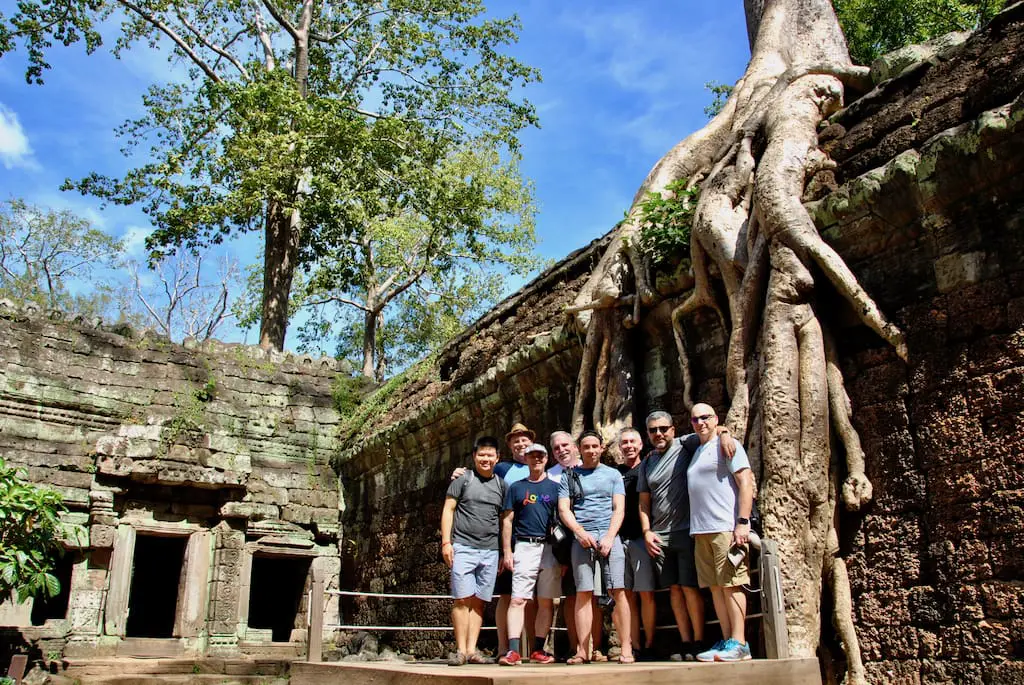
Photograph Ta Prohm on our Cambodia & Laos: Buddhist Sites & City Nights gay tour.
1. Angkor Wat
At the top of everyone’s Angkor hit list should be Angkor Wat (City Temple), Cambodia’s greatest engineering and architectural achievement. The central tower reaches 55m into the heavens. Meanwhile, 800m of bas-relief art encircles the tower like a halo. Outside, a vast moat keeps the religious sight protected.
Angkor Wat is unique for a number of reasons. Most notable are its westward orientation and the counter-clockwise stylings of its interior bas-reliefs. These attributes are both symbols of death, meaning the site served as a mausoleum for its founder, the Khmer King Suryavarman II.
Angkor Wat’s sweeping history is only matched by its physical size. It is the largest religious site in the world, coming in four times larger than Vatican City.
Travel Tip: We highly recommend rising before dawn at least once to catch the sun creeping out behind the ancient temple. You’ll want to set aside a further two to three hours to explore and learn about Angkor Wat’s intricate bas-reliefs and apsaras (heavenly nymphs).


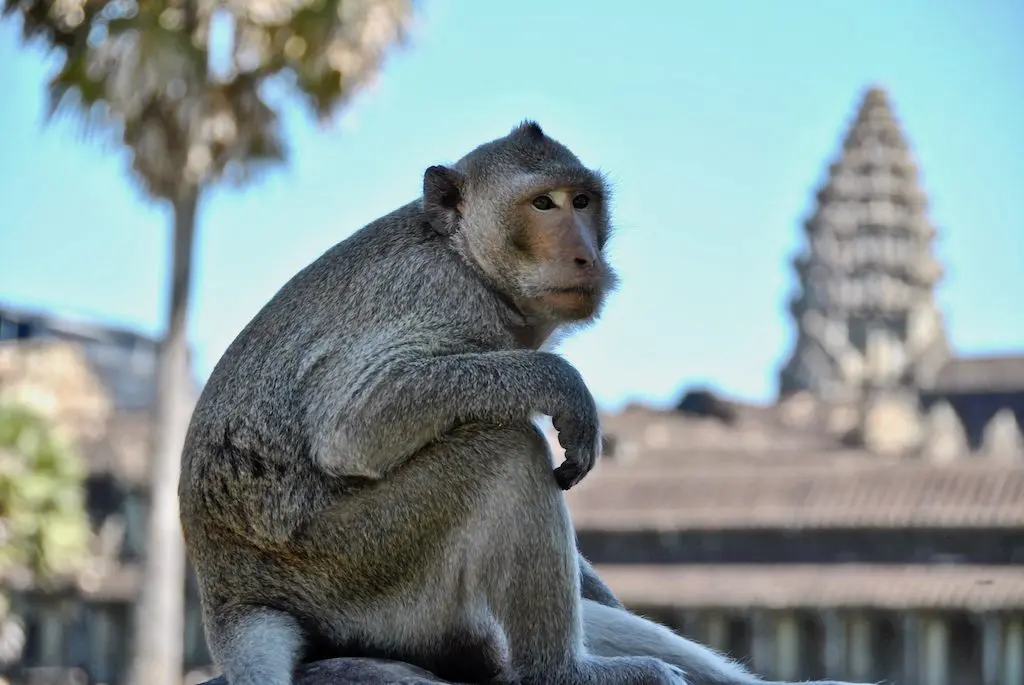

Out Adventures prominently features Angkor Wat on its Cambodia & Laos: Buddhist Sites & City Nights gay tour.
A final word on Siem Reap
As mentioned, with over 2 million visitors annually, Angkor is Cambodia’s most noteworthy tourist attraction. To visit the ancient archeological park, visitors must fly to the nearest major city, Siem Reap. This small but bustling metropolis has become an exciting destination in itself. Check out our recent post, 7 Experiences In Siem Reap That Aren’t Angkor, for a list of activities that don’t involve temples, wats, pagodas or other ancient things.
Photo credits from top to bottom: Header Photo by James Wheeler at unsplash.com; Ta Som, Bang Mealea and Kbal Spean photos from Wikipedia Commons; Bayon Temple, Banteay Srei, Ta Prohm (except Header Photo) and Angkor Wat photos by Kevin Robitaille.
Featured Posts
Learn about Angkor Archeological Park and its beautiful Lost Jungle Temples. We list the 7 Angkor temples all gay travellers should visit. Read More
While gay travellers flock to Vietnam and Cambodia, only a few trendsetters touch down in Laos. See Laos through Kevin Robitaille's lens in this exquisite photo series. Read More
Landlocked Laos offers a taste of Southeast Asia as it once was. Learn about our favourite gay experiences in this unique destination below. Read More
Known as The Gateway to Angkor, Siem Reap is an exciting destination in itself. Here's 7 other experiences Gay Travellers should have in Siem Reap. Read More
Ho Chi Minh City has a hustle-and-bustle which often overwhelms the unprepared traveller. Here’s our Just the Tips to best enjoy this historically significant, bustling metropolis. Read More
Snapshots of the the cozy quarters featured on our Cambodia & Laos: Buddhist Sites & City Nights gay tour. Read More
